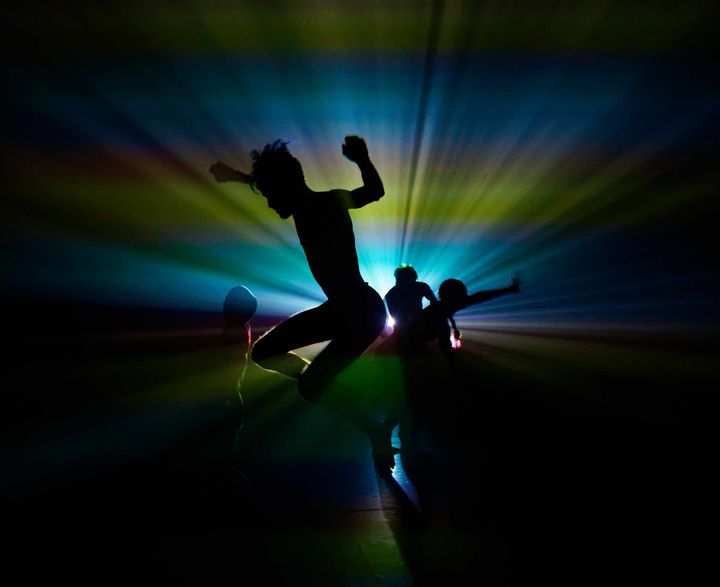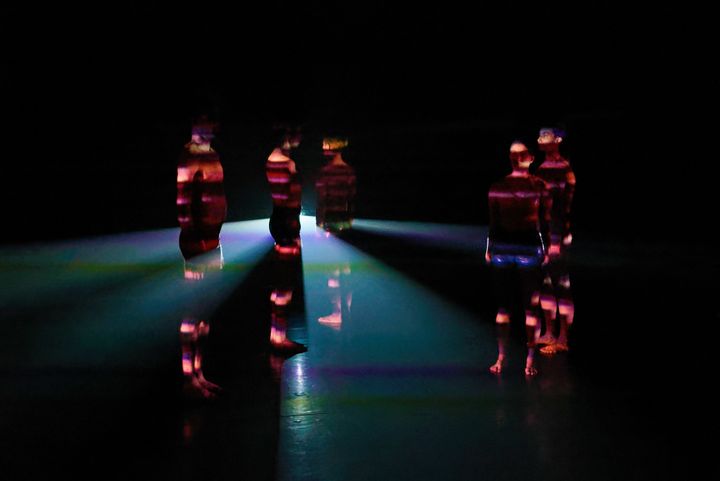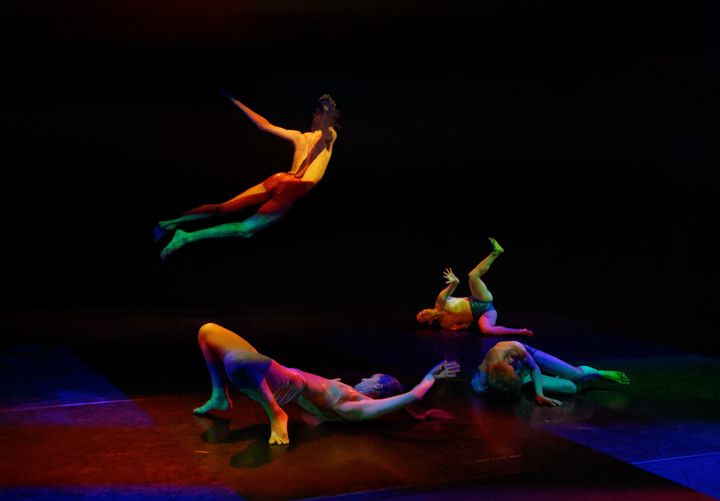
Frantic Beauty, which premiered at Brooklyn Academy of Music, is a surreal, striking performance that spans the spectrum of intense primitive energy to quiet meditation. The performance, the third chapter of the BECOMING series by Ximena Garnica and Shige Moriya, utilizes minimalist, abstract video projections along with an original musical score by Jeff Beal and features the LEIMAY ensemble.
The opening section starts with a single point of light, distinct white rays reaching outward in all directions, partially lighting the dancers like a celestial presence. Movements are slow and nuanced like blades of tall grass, but there is also a hint of an emerging energy, the sense of being on the cusp of transformation or tipping into another state of being. The light changes from slats of light into a horizontal plane of mist, shadows dipping into a lake on a foggy morning. Parts of the body sink and emerge—the body becomes visually fragmented.

The following section is infused with an intense, electric, and otherworldly energy—trembling, reaching, flailing, falling, swinging, and slapping. The body is both familiar and unrecognizable, moving in both organic and inorganic ways, making the body both subject/human and object/material. The performers release primitive and guttural noises, as if creating and discovering language for the first time. Different solo voices rise above the rest, like people taking turns speaking in tongues.
Minimalist visuals along with a deft musical score set a cinematic scene that echoes both an ancient and futuristic time. In the glow of the electric light, the dancers appear as virtual primal beings, an aboriginal cyberclan; at other times, the movements are both familiar and foreign, as if the performers were robotic instruments of artificial intelligence, programmed by advanced but confused aliens.
The raw energy pervasive in Frantic Beauty is at once Buddhist and Nietzschean. In Buddhist philosophy, the critical energy for becoming is called upādāna, the Sanskrit term that literally means “fuel” or “substrate that is the source and means for keeping an active process energized.” This fuel, interpreted as “clinging or grasping,” is the critical link to the next stage toward birth and human existence: “With clinging/grasping (upādāna) as a condition, Becoming (bhava) arises.”
The idea of the cycle of birth-death-rebirth is also echoed in Neitzsche’s philosophy. Nietzsche describes his concept of becoming as a process in a chaotic world of perpetual change, destruction, and creation. He insists on a world of “not being but becoming”:
In this world only the play of artists and children exhibits becoming and passing away, building and destroying... the ever-living fire, building up and destroying... the ever-newly-awakened impulse to play calls new worlds into being.
The dialectical nature of becoming —and its creative and destructive energies— are present throughout the performance. At times the dancers waver between being creatures learning to become human or humans reverting to basic primitiveness. The dancers move as if both at the beginning and the end of life, echoing the instinctive reflexes of a newborn infant learning to move outside the womb to a body dying from the neurological over- and under-excited states of Creutzfeldt-Jakob or Parkinson disease— the empty eyes, contorted limbs, and spasming muscles. And yet at no point does the body appear frenetic or wild in an uncontrolled manner— there is hyper-focused effortfulness and directed urgency to each movement, sound, and utterance.
Frantic Beauty is both alarming and compelling in the performers’ ability to bring opposing energies seamlessly together into one performance— they propel themselves in a continuous state of manic, almost violent energy, and then suddenly slow to a calm and pensive state. In one section, the dancers are crouched and motionless like Dali sculptures, with scattered moving black flecks of video projection traveling over their bare bodies like a massive crowd of ants. At either end of the energy spectrum, whether high or low, the sustained intensity of Frantic Beauty ushers the audience into a trancelike meditative state, leaving the audience with the strange experience of having witnessed something reminiscent of both birth and death, becoming and un-becoming.

